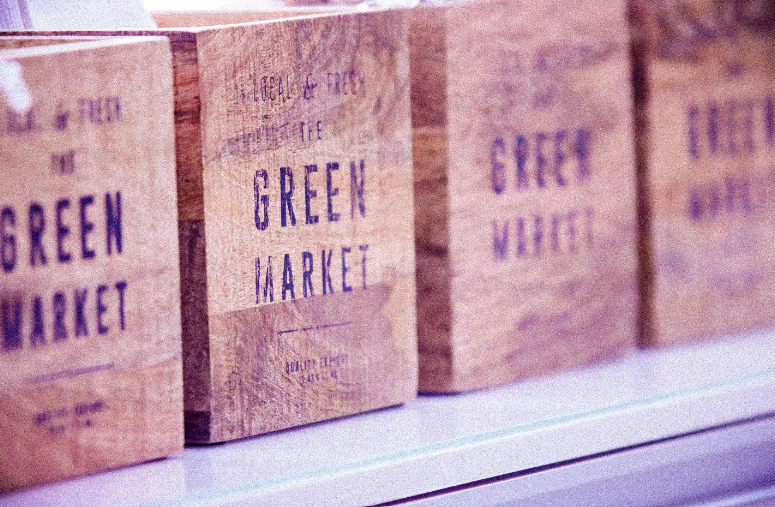How To Ensure Your Private Label Brand Stays Stocked On Amazon FBA?
Amazon FBA Private Label Brand
You don’t have much control over your business when you sell wholesale things for low profits. Are you sick of it? When you start your own Amazon private label business, you can break free from the limits and achieve endless success.
If you’re a strong business owner willing to roll up your sleeves and put in the work, this game-changing plan can help you skyrocket your profits and reach unmatched growth.
We’re about to tell you the hidden details of this exciting chance in this post full of action. Find out everything you need to know about the Amazon private label business so you can start your products on Amazon with comfort. Let’s go!

7 Expensive Mistakes to Avoid
Violating Amazon TOS
Not following Amazon’s Terms of Service and FBA rules is the biggest mistake that new and even experienced Amazon Private Label buyers make. Amazon will stop sellers right away if they break their TOS.
People whose seller accounts are banned can’t get to any product that’s still in Amazon’s fulfillment centers. Amazon will get rid of thousands of dollars worth of goods that belong to accounts that have been banned.
To make sure their private label product is legal, meets safety and compliance standards, doesn’t violate any trademarks or brands, and doesn’t break any limits or barriers for its product category, this is the first thing any Amazon seller does.
Some accounts can be restored, but Amazon isn’t required to answer any selling questions. After a suspension, an account is only brought back if it is later found to have been stopped incorrectly. A warning probably won’t get you out of breaking TOS.
Bad Inventory Management
For Private Labels, keeping track of your inventory is very important for your Amazon FBA business. Customers will start buying from your competitors as soon as your product page says “unavailable.” In private label, if you sell a “hot” product, another Amazon Private Label business is selling an exact copy of it.
You can’t depend on a well-known “big brand” or even on customers sticking with you if you sell private label goods.
When people shop on Amazon, they care most about price, availability, and reviews. A lot of Amazon buyers will go to a different store if they see “in stock on…” or “currently unavailable.” People who are used to 1-day prime shipping know that bad inventory management can kill a good product.
You need to think about both the lead time from your supplier and the wait time from Amazon when you need to restock your ASINs.
Read More: Million Dollar Question: How to optimize PPC Campaigns?
Insufficient Product Promotion
In 2021, no product can stay on Amazon’s market without being carefully promoted. To keep your product selling, you need to get reviews quickly. To do this, make sure your product listings are fully optimized with backend search words or use ppc management services.
Unaware of Amazon Policy Changes
Starting, it’s not enough to just follow Amazon’s Terms of Service (TOS). Amazon’s policies are always being updated and changed. All Amazon sellers should know about any changes to the TOS or FBA policies, as they will affect their business.
One recent statement on Amazon Seller Central told sellers that starting June 1, 2021, FBA fulfillment fees will go up by an average of 2% to 3%. Incorrect price-to-cost ratios can cause sellers to lose a lot of money if they don’t know this important fact.
Not knowing about changes to policies is a costly mistake that many buyers don’t realize they’re making. Amazon FBA sellers can afford to not keep up with announcements and stories on their Amazon Seller Central dashboard.
Overly Aggressive Price Matching
The issue with amazon program ppc is that there are 50 to 100 other businesses selling the same popular item. Even if the product isn’t very well known, as soon as you post it, five new rivals will appear within a week, usually with even lower prices.
A lot of private-label sellers will match the prices of their rivals when this happens. While this works in some situations, you start to lose money after a while.
Even worse, cutting costs and prices makes the quality worse. On an easy-to-use site like Amazon, the choice between quality and price is very risky. Instead of matching their prices, you should look at new rivals’ products and see what problems they have and what problems their customers have.
You can then give those people a better product that they’ll gladly pay more for. A better product will get more positive reviews. If a potential customer sees your product with 100 reviews and another product for a much lower price with only 1-2 reviews, they will choose yours.
Overattachment to Products
Getting too attached to their goods is a mistake that many sellers make. People are always looking for new private-label products, so even if the one you spent 50 hours studying sold well a few months ago, they may not be interested in ordering it anymore.
Amazon program ppc sellers need to keep looking for new products because sticking to their old ASINs will ultimately harm their sales.
At first, keeping stock of a product that isn’t selling well might not seem like a big deal. But the costs of keeping a bad product will add up, and not just in storage fees and lost advertising money.
If a product has hit the end of its useful life, it’s best to get rid of it. You should try to guess how much will sell in the future so that you can just run out of it and not bring it back until it’s gone.
Delaying Customer Service
Most of the customer service for Amazon FBA sellers is handled by Amazon, but you will still get direct questions every once in a while. Do not ignore these at all costs, as they have a direct effect on the health of your account.

Customer service rules at Amazon say that they should answer texts from buyers within 24 hours. When you go over that 24-hour limit, it starts to hurt the health of your account.
If you want to work for automated amazon ppc, you should always put the customer first. This also goes for Amazon sellers. If you don’t answer customer questions right away, it could cost you a lot of money in the long run, and in the worst case, your account could be closed.
Also, never ask for reviews in the Buyer Messages section, as this could lead to your account being banned for trying to change reviews.
Are You Thinking About Using Amazon PPC To Help Your Amazon Business Grow?
Avoid falling into the trap of not promoting your product enough at all costs, because once rivals start coming in, it gets harder and harder to get back up the rankings. As of 2021, around 75% of third-party sellers on Amazon use Amazon PPC.
In other words, if you’re in the 25% that doesn’t use it, your Amazon business is probably failing. There are many classes, both on Amazon and from outside sources, that break down amazon program ppc into lessons that are easy to understand. It’s easier to just use Amazon PPC Management Software, which can do all the work for you.
Why Sell Private-Label Products On Amazon?
There are a lot of different ways to sell things on Amazon, but selling private-label products is by far the most popular. These are five good reasons to sell your brand of items on Amazon.
You Own The Name And Logo
In private labeling, the brand is owned by your business. This is different from arbitrage or wholesale, where you sell other brands’ goods. You can market, grow, and price your goods however you want with the private label model.
To find cheap items to sell for more money, you don’t have to get brand approval or go through a lot of trouble.
Higher Profit Margins
Your prices are much lower than if you were selling other brands’ goods because you get them straight from the manufacturer or supplier. Your profit margin is smaller when you buy in bulk because the brand owner or a distributor has raised the price, leaving you with less to spend. Private name goods don’t have a middleman. You are buying goods at the cheapest price possible.
Customize Your Product
You can change everything about the product however you want. Check out customer reviews of similar products and pay attention to the problems people are having with their purchases. These are great clues. After that, you can think about how to make your product even better than the most popular ones.
You can plan, come up with ways to make the goods better, and beat what’s already on the market with this way of selling. There’s more to making a product stand out than just putting a logo on it. Work with your supplier and graphic artist to do this. Amazon will make it hard for you to sell something that looks like everything else on the site.
Creative Control Over The Amazon Listing
You have to make a new post in the Amazon marketplace every time you release a private-label product. This means you can easily change the prices, images, post text, and amazon keywords whenever you want.
Since you weren’t the seller who listed the product, it’s not easy to change the images or copy if you need to when you’re reselling on a current Amazon product detail page.
No Competing For The Buy Box
Selling other people’s goods on Amazon means you’ll probably be fighting with other marketplace sellers for the Buy Box. For you to lose a sale, make sure your offer is in the Buy Box when the customer makes a purchase. Private label lets you be the only seller on the post, and you get full control over the Buy Box.
How To Kickstart A Private Label Business
A key part of running a successful Amazon Private Label business is picking the right product to sell. Do some study on the market, look for suppliers you can trust, and figure out some financial numbers to start. After you finish this part, you can start selling your products.
Pick Out A Product
When you choose your product line, you should only use market data. You should stay on the right road and not let your tastes and preferences get in the way. If not, you might end up with a lot of stock that doesn’t sell because customers don’t need it.
Pick Out The Best Items
Remember that it’s cheaper to store and ship things that are small and light. Things are harder to sell when they cost more. Stick to prices between $15 and $50.
You need to find a product that makes money but isn’t too famous. Keep an eye on Amazon sellers who are selling the same things. An average of 300 sales and 100 reviews from customers every month is required.
There are no special items. The seasons should not affect your sales. If you want to start your own business on Amazon, you might not want to sell beach suits, winter hats, or Christmas lights.
Stay away from things that need extra licenses and certifications, like food, toys for kids, and so on, to avoid extra trouble. Don’t ship gadgets, fragile items, or other things that are easy to break during shipping.
Find A Good Manufacturer
Picking a good provider is very important and will have a big effect on your output. Join the e-commerce site, look for things that interest you, and choose a few sellers. Contact each individual and ask them these questions:
- Would they be able to use the Private Label model?
- For how much do they sell for?
- How long will it take them to make the things you’ve asked for?
- Do they send packages to your country? How much will it cost if they do?
- How can I pay them and what are their terms?
Order a sample of the product from the makers that made it through the first round of selection. You should think about the following things when choosing a supplier:
- Was the delivery on time?
- Do you like the way the package looks? Were the things broken while they were being shipped?
- Is the quality of the goods what was promised?
- Are you happy with the way you’re talking to the manufacturer? How fast do they answer your messages?
It’s not always best to get a product at a cheap price, especially if it’s not very good and the company that makes it isn’t good at communicating clearly. It may take a while to find the best price-to-quality relationship, but it will be worth it in the end.
Choose between FBA and FBM
Put the products on Amazon after getting a test batch to see how well it sells. To sell your items on Amazon, you can use one of two options before putting them on the market:
- It’s up to the seller to store, package, ship, cancel orders, and deal with other problems.
- What is Fulfillment by Amazon (FBA)? The seller gives Amazon some of the shipping work and customer service.
If you only need to test a small batch quickly, choose the simpler FBA model. You just need to send your things to an Amazon center. Amazon will pack and ship your items and handle customer reviews on the site. You don’t have to worry about the rest.
The most important thing about customer reviews is that they are used to test the product. Read each review carefully and use the comments to make your business better.
Define A Cost
This is the right time to put a price on your things. You need to look into how your competitors set their prices and do some simple math to do this.
Experts say that the best price for you should be about 20% of the market price. A good price range for mugs is between $12 and $18, if, say, your competitors are selling them for $15. Don’t give in to the urge to sell for the least amount of money. Dumping may seem like a good idea at first, but it costs money in the long run.
Register A Trademark

Sign up for a brand
Will you be selling your Private Label items under a name that you have to register? The clear answer is “yes.” No matter what, this will keep your business safe from “hijackers.” These are the people who sell fake goods or products with your product cards attached.
There are two things you can do to keep your Amazon business safe. To start, you need to file for a brand. Following that, you need to add it to the Amazon Brand Registry.
Amazon’s Brand Registry program is meant to keep listed brands’ intellectual property from being stolen. Amazon goes out of its way to punish dishonest buyers who take advantage of brands that work hard. Based on data from Amazon, the Brand Registry has helped cut down on violations by 99% since it first came out.
Market Your Items On Amazon
An effective mix of strong branding, SEO, and advertising will help you get your goods in front of the people you want to buy it. We should look at each of these factors separately.
Develop A Brand Name
Labeling your products with your brand is one of the best things about the Private Label approach. Your e-commerce business will benefit in many ways from having strong visual branding. Showing off the value of your goods is a great way to get your business noticed above others.
First, make a logo that will be an important part of your brand’s personality. Online character makers are great for people who are new to graphic design. Put in the name of your Amazon shop and get a logo made just for it!
Utilize SEO
The next thing you should do is make your product PPC ads better. SEO, along with good photos of your items, is a key factor that can help you step up your game and beat your competitors. Consider these suggestions if you want to get to the top of the Amazon results!
Improve your headline with relevant buzzwords to help people find your products. Describe the benefits your product can provide for users and how it is better than what your competitors are offering. Paper and markers. Write a short USP (unique selling proposition) that includes keywords.
Advertise with pay-per-click (PPC)
You can also get your target crowd to see your inventory by starting an ad campaign. Although it costs money, this method can save you a lot of time when testing your first batch of goods.
Amazon advertises itself with amazon program ppc. It puts your product at the top of search results, in remarketing ads, and even on the product pages of your rivals.
Using A/B testing is another good way to make your marketing work better. See which ad gets better results by running two copies with different prices, photos, keywords, and other details.
Read More: Amazon FBA: Tools and Strategies for Expanding Your Product Line
Bottom Line
Overall, Amazon Private Label sellers make a lot of mistakes that cost businesses a lot of money. We’ve already talked about the most important ones. We hope that our article was useful and showed you enough about these mistakes to keep your business from making them.
